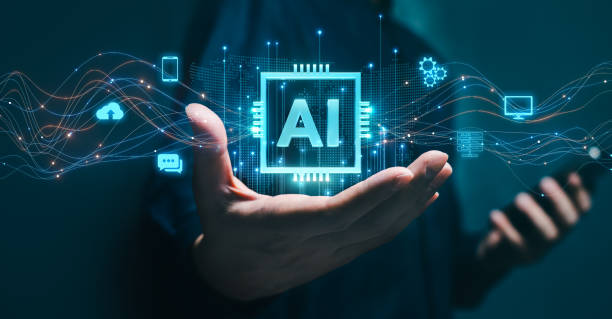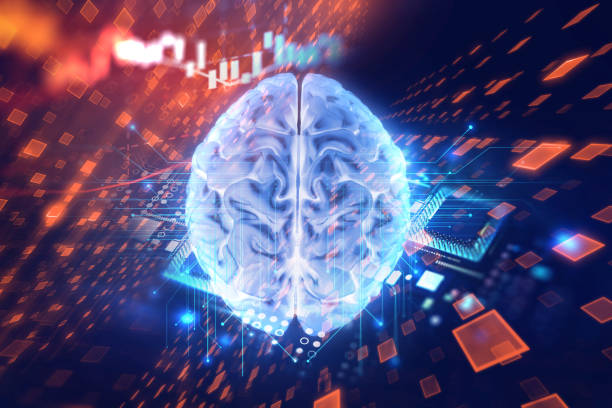What is an AI Robot? Comprehensive Definition and Initial Applications
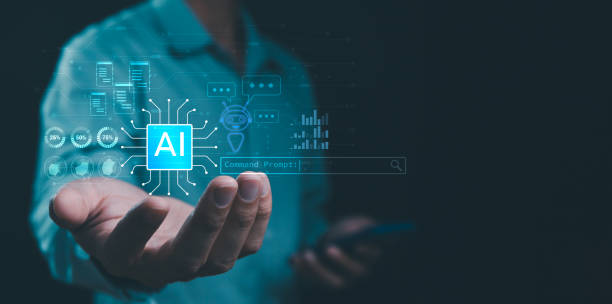
In today’s world, the term #Artificial_Intelligence is frequently heard, but what is an AI robot and how does it differ from other robots? Simply put, an AI robot is a machine that, using machine learning algorithms and other artificial intelligence techniques, is capable of performing tasks that typically require human intelligence.
These tasks include natural language understanding, pattern recognition, decision-making, and problem-solving.
AI robots can be used in a wide range of industries and applications, including manufacturing, customer service, healthcare, and education.
They can help automate repetitive and tedious tasks, improve accuracy and efficiency, and provide more personalized services.
Additionally, an AI robot has the ability to learn and improve its performance over time, meaning it can continuously adapt to its environment and perform its tasks more effectively.
For example, an AI robot on a production line can automatically detect defective parts and remove them from the line, while an AI robot in a call center can answer customer questions and resolve their issues.
Ultimately, an AI robot is a powerful tool that can help improve our lives in many areas.
The application of AI robots is expanding daily, and they are expected to play an increasingly important role in our lives in the future.
Are you losing business opportunities due to an outdated website? With Rasawweb, permanently solve the problem of not attracting potential customers through your website!
✅ Attract more high-quality leads
✅ Increase brand credibility in the eyes of customers
⚡ Get free consultation for corporate website design
What is the Difference Between Traditional Robots and AI Robots?
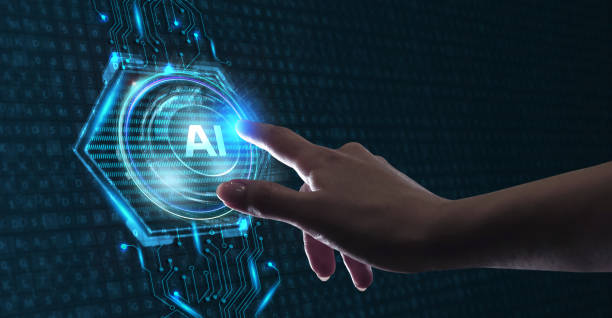
The fundamental difference between traditional robots and AI robots lies in their flexibility and ability to perform complex tasks.
Traditional robots are typically designed for repetitive and predefined tasks.
They operate based on pre-written programs and are unable to learn or adapt to new conditions.
In contrast, AI robots, using machine learning algorithms and other artificial intelligence techniques, are capable of learning from data and experiences.
They can recognize patterns, make decisions, and solve problems.
This enables them to perform more complex tasks and automatically adapt to new situations.
For instance, a traditional robot on a production line can only perform one specific task, such as welding parts.
But an AI robot can perform several different tasks, such as inspecting parts for quality, detecting defects, and even repairing faulty parts.
Furthermore, AI robots can collaborate with humans and assist them with complex tasks.
They can collect and analyze information, provide recommendations, and even make decisions on behalf of humans.
Ultimately, AI robots have great potential to transform various industries and improve our lives.
Main Components of an AI Robot
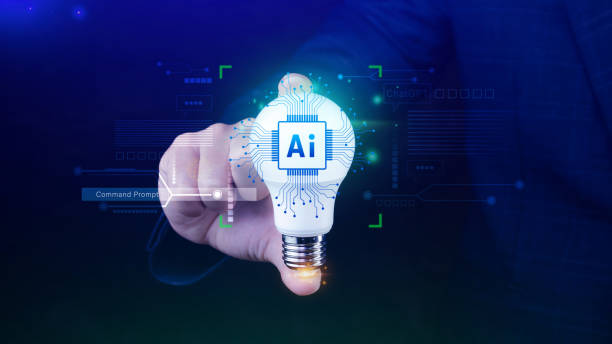
An AI robot consists of several main components that work together to enable it to perform complex tasks.
These components include:
- **Sensors** Sensors enable the robot to collect information from its surroundings.
This information can include temperature, light, sound, images, pressure, and other physical parameters. - **Processor** The processor is responsible for processing the information collected by the sensors.
Using AI algorithms, the processor analyzes the information and makes decisions based on it. - **Actuators** Actuators enable the robot to move within its environment and interact with it.
Actuators can include motors, pumps, and other mechanical devices. - **Software** Software includes AI algorithms, control programs, and other programs that the robot needs to perform its tasks.
- **Power Source** The power source provides the necessary energy for the robot’s operation.
The power source can include batteries, solar cells, or other energy sources.
In essence, an AI robot uses these components to understand its environment, make decisions based on collected information, and perform its intended tasks.
For example, an AI robot designed for autonomous driving uses sensors like cameras and LiDAR to gather information about its surroundings.
Then, the robot’s processor, using AI algorithms, analyzes the information and makes decisions about how to drive.
The robot’s actuators, such as motors and brakes, enable the robot to move according to the decisions made.
The robot’s software includes AI algorithms, control programs, and other programs that the robot needs for autonomous driving.
| Component | Description |
|---|---|
| Sensors | Collecting information from the environment |
| Processor | Processing information and decision-making |
| Actuators | Movement and interaction with the environment |
| Software | Artificial intelligence algorithms |
| Power Source | Providing energy |
Types of AI Robots Based on Application
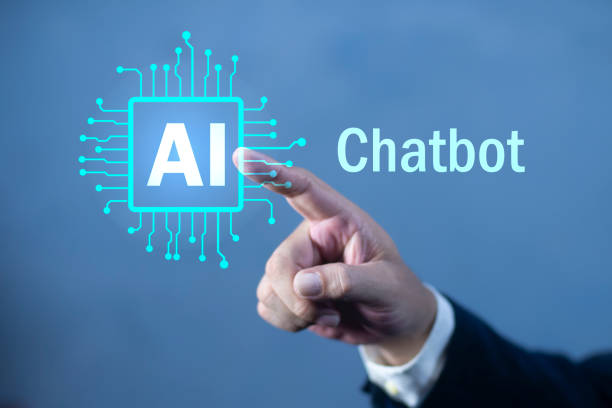
AI robots are divided into different types based on their application.
Some of the most common types of AI robots include:
- **Industrial Robots** These robots are used in production lines and other industrial environments to perform repetitive and dangerous tasks.
- **Service Robots** These robots are used to provide services to customers in various environments, such as stores, restaurants, and hospitals.
- **Medical Robots** These robots are used for surgeries, rehabilitation, and other medical tasks.
- **Agricultural Robots** These robots are used for planting, harvesting, and other agricultural tasks.
- **Military Robots** These robots are used for military tasks, such as reconnaissance, bomb disposal, and combat.
Choosing the appropriate type of AI robot depends on the specific needs and requirements of each application.
For example, a car manufacturing plant might use industrial AI robots for welding, painting, and assembling parts, while a hospital might use medical AI robots for minimally invasive surgeries and rehabilitation services.
Tired of losing customers due to poor e-commerce website design? With Rasawweb, solve this problem permanently!
✅ Significant increase in sales and visitor-to-customer conversion rate
✅ Smooth and engaging user experience for your customers⚡ Get free consultation
The Role of Machine Learning in the Development of AI Robots
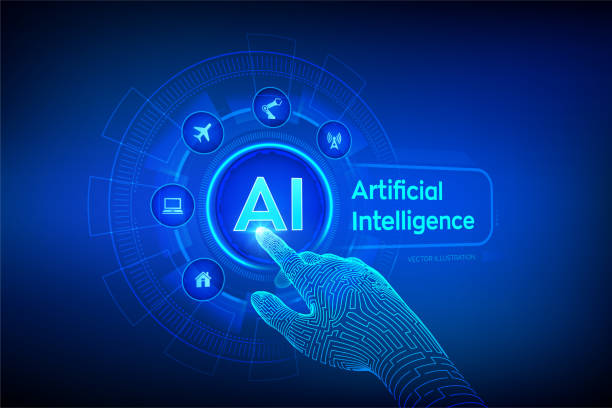
Machine learning plays a fundamental role in the development of AI robots.
Machine learning enables robots to learn from data and experiences and improve their performance over time.
Machine learning algorithms allow robots to recognize patterns, make decisions, and solve problems.
This enables robots to perform more complex tasks and automatically adapt to new conditions.
Without machine learning, AI robots would not be able to perform many of their tasks.
For example, an AI robot designed for autonomous driving uses machine learning to learn how to drive in various conditions.
This robot, using data collected from sensors like cameras and LiDAR, learns how to recognize traffic signs, avoid obstacles, and navigate traffic.
Over time, using machine learning, the robot improves its performance and becomes capable of driving in more complex conditions.
Indeed, an AI robot can operate independently and make intelligent decisions thanks to machine learning.
Current Challenges and Limitations of AI Robots

Despite significant advancements in the field of AI robots, there are still numerous challenges and limitations that need to be addressed.
Some of these challenges and limitations include:
- **Cost** AI robots are still very expensive and inaccessible to many organizations and individuals.
- **Complexity** The development and maintenance of AI robots are very complex and require high technical expertise and knowledge.
- **Reliability** AI robots are not yet sufficiently reliable and may not perform correctly in unexpected situations.
- **Ethics** The use of AI robots raises numerous ethical issues, such as accountability, privacy, and discrimination.
- **Security** AI robots may be vulnerable to cyberattacks and misuse.
To overcome these challenges and limitations, further research and development in the fields of artificial intelligence, machine learning, and robotics are needed.
Additionally, appropriate laws and regulations must be established to govern the use of AI robots to prevent their misuse.
What Will Be the Future of AI Robots?
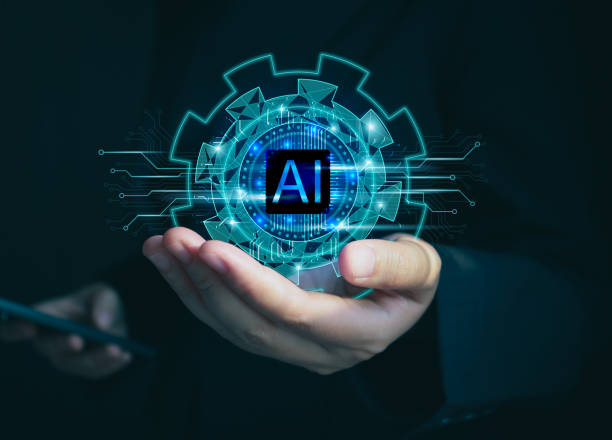
The future of AI robots appears very bright.
With continuous advancements in artificial intelligence, machine learning, and robotics, AI robots are expected to play an increasingly important role in our lives in the future.
It is predicted that AI robots will be capable of performing more complex and diverse tasks in the future and will be used in a wider range of industries and applications.
For example, AI robots are expected to play a significant role in healthcare in the future.
They can assist doctors in diagnosing diseases, performing surgeries, and providing rehabilitation services.
Additionally, AI robots are expected to play an important role in education in the future.
They can help teachers provide personalized education and evaluate student performance.
Ultimately, AI robots are expected to play a significant role in our daily lives in the future.
They can help us with household chores, shopping, and other tasks.
| Field | Robot’s Role |
|---|---|
| Healthcare | Disease diagnosis, surgery, rehabilitation |
| Education | Personalized education, performance evaluation |
| Daily Life | Performing household chores, shopping |
The Impact of AI Robots on the Job Market

The impact of AI robots on the job market is a topic that has been widely discussed and examined.
Some experts believe that AI robots will lead to the elimination of many jobs, while others believe that AI robots will create new job opportunities.
Overall, AI robots are expected to automate repetitive and tedious tasks, allowing humans to focus on more creative and complex tasks.
This may lead to the loss of some jobs, but it will also create new job opportunities in fields such as artificial intelligence, machine learning, and robotics.
For example, AI robots are expected to play a significant role in manufacturing and services in the future.
They can help automate production lines, provide customer service, and manage supply chains.
This may lead to the elimination of some jobs in these areas, but it will also create new job opportunities in fields such as the design, development, and maintenance of AI robots.
To benefit from the advantages of AI robots in the job market and prevent their negative effects, there is a need for workforce education and training in new and emerging fields.
Additionally, appropriate policies must be established to support workers affected by automation.
Disappointed with your e-commerce site’s low conversion rate? Rasawweb transforms your e-commerce site into a powerful tool for attracting and converting customers!
✅ Significant increase in visitor-to-buyer conversion rate
✅ Unparalleled user experience to boost customer satisfaction and loyalty⚡ Get free consultation from Rasawweb!
Ethical Issues Surrounding the Use of AI Robots
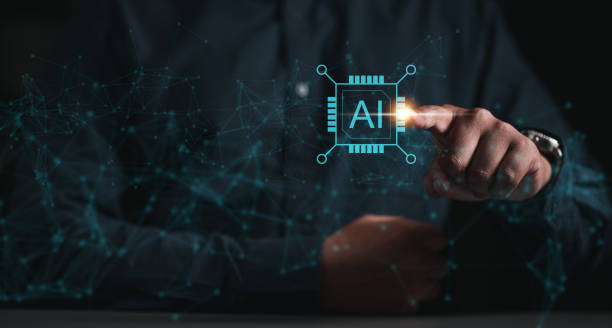
The use of AI robots raises several ethical issues that need attention.
Some of these ethical issues include:
- **Accountability** If an AI robot makes a mistake or causes harm, who will be responsible? The designer, the manufacturer, or the user?
- **Privacy** AI robots can collect a lot of information about us.
How can our privacy be protected from the misuse of this information? - **Discrimination** AI algorithms may contain unconscious biases that lead to unfair decisions.
How can discrimination in AI robots be prevented? - **Security** AI robots may be vulnerable to cyberattacks and misuse.
How can the security of AI robots be protected?
To resolve these ethical issues, appropriate laws and regulations are needed to govern the use of AI robots.
Additionally, attention must be paid to the ethical education and training of AI and robotics specialists.
An AI robot, with all its potential to improve our lives, requires a responsible and ethical approach in its design, development, and use.
Important Considerations When Choosing and Using AI Robots
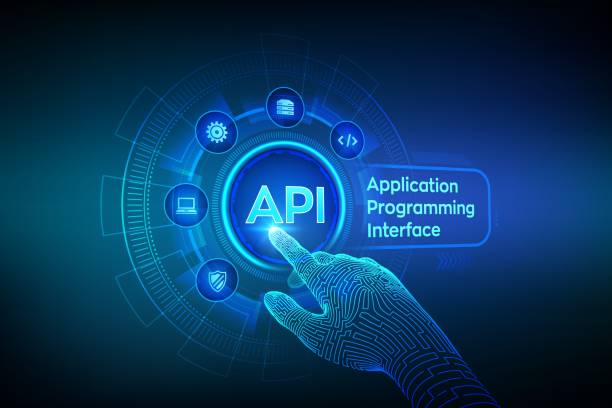
Choosing and using AI robots requires attention to important points.
Before purchasing or using an AI robot, you must accurately define your needs and requirements.
What tasks do you want to assign to the robot? What is your budget? What are your expectations for the robot’s performance? After defining your needs and requirements, you should conduct sufficient research and compare different AI robots.
Pay attention to features, capabilities, price, and user reviews.
Also, you must pay attention to the security of the AI robot and ensure that it is protected against cyberattacks.
After selecting the appropriate AI robot, you must receive the necessary training for its use.
Pay attention to the manufacturer’s instructions and use the robot correctly.
Finally, you should regularly monitor the robot’s performance and, if necessary, adjust its settings.
An AI robot is a powerful tool that can help improve our lives, but its correct use requires care and attention.
Frequently Asked Questions
| Question | Answer |
|---|---|
| What is an AI robot? | An AI robot is a machine capable of understanding its environment, reasoning, learning, and making decisions to perform tasks autonomously. |
| What is the difference between ordinary robots and AI robots? | Ordinary robots perform repetitive tasks based on prior programming, while AI robots can learn from experience, interact dynamically with their environment, and even behave in ways that resemble human intelligence. |
| What are the main applications of AI robots? | They are used in industries (manufacturing, assembly), medicine (surgery, diagnosis), services (customer support, domestic), exploration (space, underwater), and many other fields. |
| What technologies are used in the construction of AI robots? | Machine Learning, Computer Vision, Natural Language Processing, Deep Learning, and Robotics are among the key technologies. |
| Can AI robots have emotions? | Currently, robots do not have emotions in the human sense. They can identify and react to emotions, but they do not experience emotions themselves. |
| What are the main challenges in developing AI robots? | Safety, reliability, ethics, autonomy, adaptability to complex environments, and natural human interaction are important challenges. |
| How are AI robots trained? | They are typically trained using large amounts of data, machine learning algorithms, and deep learning to identify patterns and make decisions. |
| Examples of AI robots in daily life? | Smart robotic vacuum cleaners, customer support chat robots, self-driving cars, and surgical robots in hospitals. |
| Are AI robots a threat to human jobs? | Some repetitive jobs may be automated, but at the same time, robots can increase productivity and create new jobs in the development, maintenance, and supervision of these systems. |
| How is the future of AI robots predicted? | They are expected to become smarter, more autonomous, and capable of performing more complex tasks, engaging in closer interaction with humans in various environments. |
And other services of Rasaw Web Advertising Agency in the field of advertising
- Smart Content Strategy: A dedicated service for growth in customer acquisition based on key page optimization.
- Smart SEO: An effective tool for campaign management with the help of Google Ads management.
- Smart Google Ads: An effective tool for user interaction with the help of Google Ads management.
- Smart Link Building: A dedicated service for digital branding growth based on key page optimization.
- Smart Marketing Automation: A professional solution for improving SEO ranking with a focus on attractive UI design.
And over hundreds of other services in the field of internet advertising, advertising consultation, and organizational solutions
Internet Advertising | Advertising Strategy | Advertorials
Sources
Applications of AI Robots
What is an AI Robot?
The Future of AI Robots
Development of AI Robots
? At Rasawweb Afarin Digital Marketing Agency, your digital dreams come true with our expertise. From professional SEO optimization to secure website design and creative advertising campaigns, we are your partner in the digital world.
📍 Tehran, Mirdamad Street, Next to Central Bank, Southern Kazerun Alley, Ramin Alley No. 6

